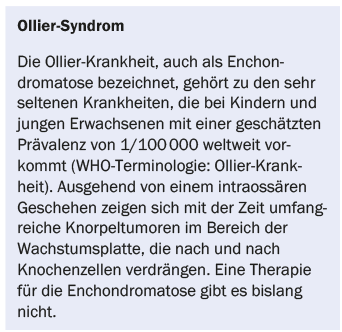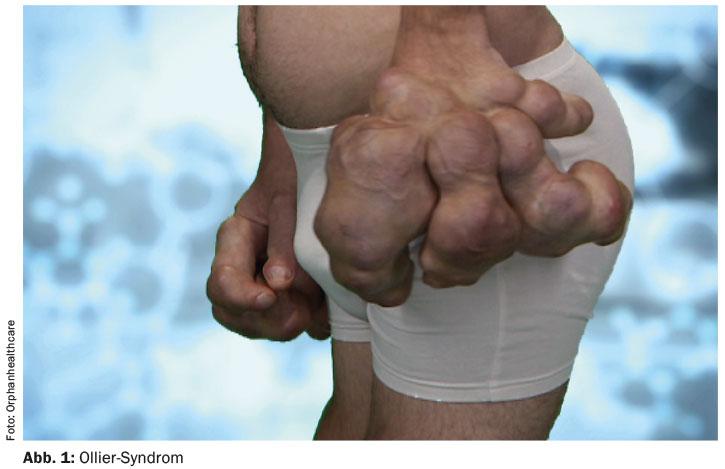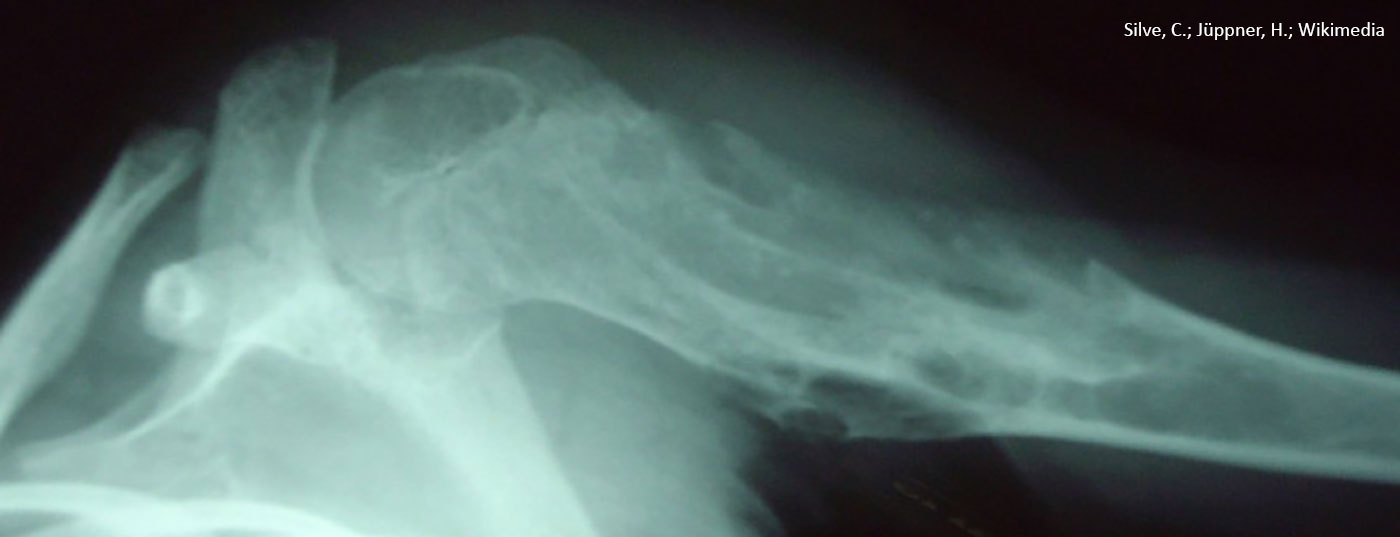In the course of my many years of foundation work, I have been confronted with many cases of rare diseases. Nevertheless, one case particularly concerns me. It is about a 21-year-old patient from Ukraine who suffers from Ollier’s disease.
Recently, our foundation Orphanhealthcare received an email from a medical doctor from Ukraine. In it, she described the case of 21-year-old Danylo* and asked us to find therapy options to help the young man and his family. Danylo suffers from the very rare Ollier syndrome, a form of enchondromatosis with a difficult prognosis.

In Danylo, the deformities of the phalanges and metacarpals have been very pronounced since childhood. The cartilaginous growths of both hands are now very prominent and severely affect the patient in everyday life. Thus, individual limbs with a circumference of up to 90 mm and a length growth of 122 mm can be found (Fig. 1). The soft tissue circumferential growths have largely displaced the original bone tissue of the fingers. This tissue remodeling has also occurred in the radius and ulna, with individual segments of both bones still recognizable. CT scan shows marked chondromatous bone dysplasia of both hands as well as the distal segments of the forearm bones.

Forecast
So far, there are no specialized facilities for therapy in Europe. Individual lesions are treated with curettage. If there is a transition to chondrosarcoma, it is treated according to the classical scheme. Most often, patients are referred to oncology and surgery outpatient clinics when suspected.
Network
A contact person for affected persons and their families (in the sense of a patient organization for this disease) does not yet exist in Europe. This is where we, as the Rare Disease Foundation, start our work. We facilitate the transfer of knowledge in a competence center, which is operated via volunteer work. Specifically, we prepare information for the professional and lay public and disseminate it through print and online media. The Center initiates research projects at the university level and promotes visibility and education through campaigns, lectures, and book readings. On this path, we will not only succeed in sustainably improving Danylo’s quality of life.
If you have experienced a similar case in your practice, we will support you in presenting it (also anonymized) to the professional audience. This allows us to generate knowledge, which in turn drives the development of better therapies.
*Name changed
HAUSARZT PRAXIS 2016; 11(3): 8












